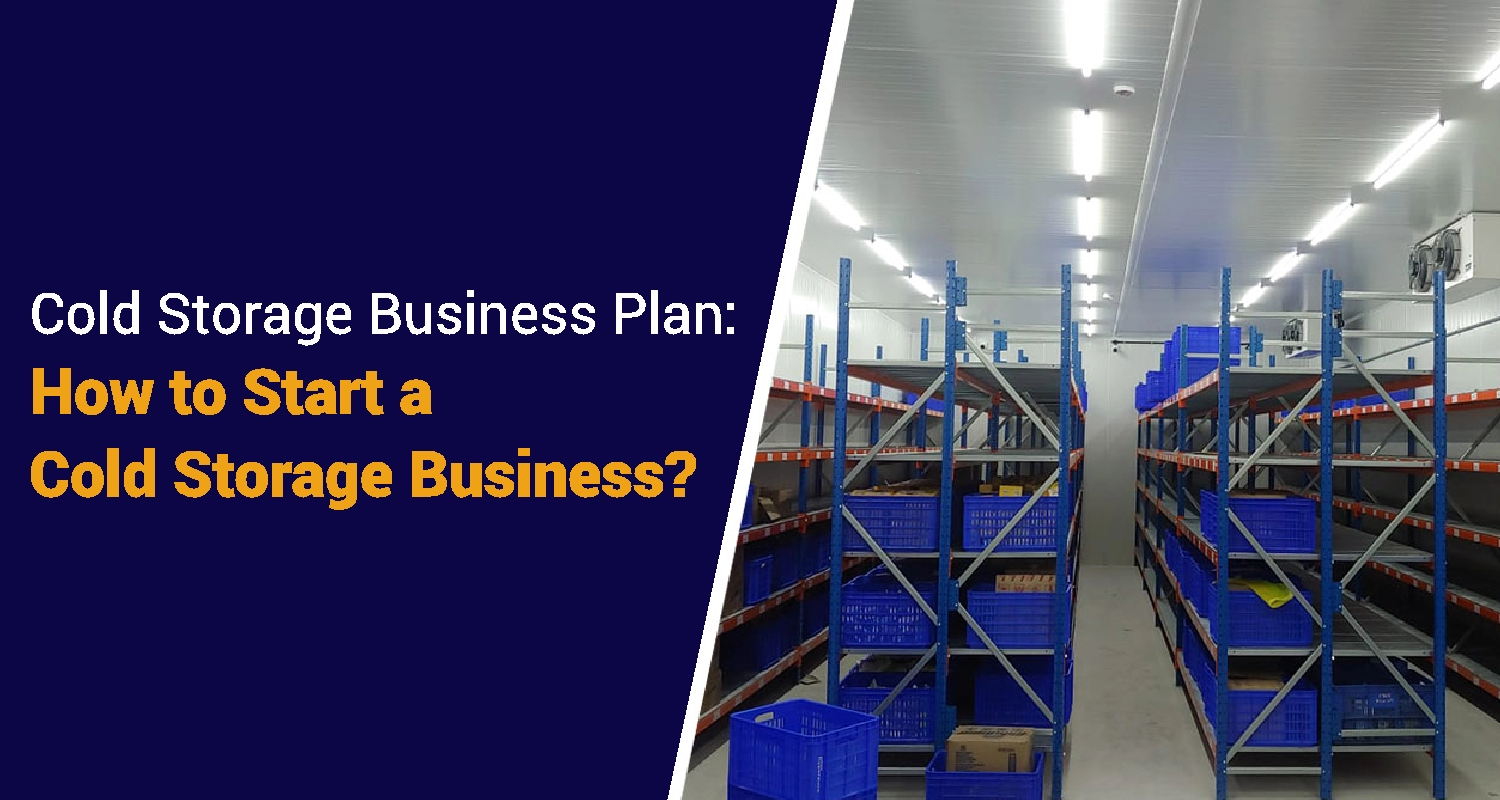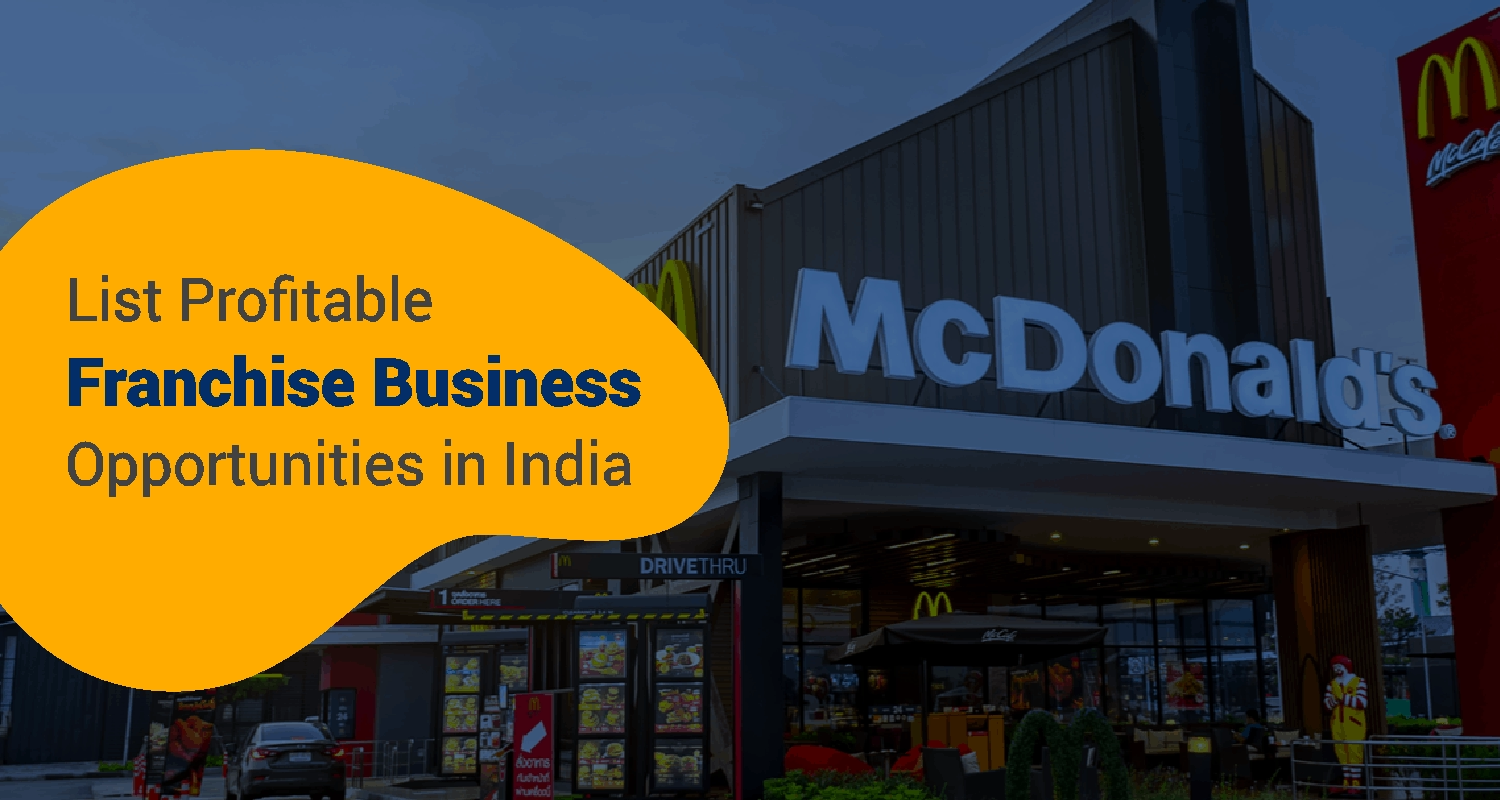How to Start Cold Storage Business in India

Cold storage is a powerful solution to preserving fresh produce in the country thereby turning waste into potential gains. It saves nearly 40% of fresh produce in the country that is lost due to poor storage. What if this rising demand of preserving fresh produce is turned into a venture? The Cold Storage business is an expensive one but the returns are huge and long term. In this blog, we shall discuss the process of setting up a cold storage business and why investing in it has a potential for the future .
What is cold storage?
A cold storage facility is essentially a large warehouse that uses machines and instruments to maintain a low temperature. This allows for the storage of perishable goods like fruits, vegetables, dairy, frozen foods which extends their shelf life.
What is the scope of the Cold Storage Business Industry in India?
With the burgeoning demand for processed foods and change in dietary habits, cold storages are a growing sector to meet demands. Investments in e-commerce have also contributed to the significant price in the business of cold storage as the requirement for efficient storing of perishable goods have increased manifolds. The advancement of technology like automatic temperature control systems, energy efficient equipment etc have led to lower operating cost and also contributed to higher efficiency. Cold storages have become a critical component in improving India’s economy being a potential player to prevent food waste and maintain food security. India can unleash new opportunities and economic growth by leveraging this sector.
Why are cold storage businesses required?
There are several reasons for Cold storages businesses particularly in the agricultural and food sectors:
- Extending Shelf Life: You can preserve perishable items for longer periods in cold storages. You need not worry when buying fruits, vegetables, dairy and meat products next time fearing that they may spoil over time.
- Reducing Food Wastage: Cold storage facilities are very efficient as they minimise spoilage especially during peak hours of harvest season when there is usually an oversupply of produce. Cold storages control the temperature of stored food to manage food wastage.
- Ensuring Year-Round Supply: You can enjoy a steady supply of fresh food products now throughout the year as cold storages stock seasonal products retaining their freshness and extending their shelf-life. Cold storages can now even meet consumer demand during off seasons.
- Improving Farmer Income: During periods of oversupply, farmers are not in a hurry for distress sale as they can store their produce in the cold storages easily and sell it when demand and prices are higher.
- Maintaining Product Quality: The nutritional value , texture and flavour of food products remain intact in cold storage facilities even after a long storage period and this ensures customers getting high quality products.
- Supporting Transportation: Transportation during peak seasons are not pressured because products in cold storage warehouses keep fresh for a long time during transport and this helps in better planning and easing the delays in getting products to markets.
- Reducing Post-Harvest Losses: Post harvest losses are reduced where cold storages for vegetables and fruits play a critical role. They serve as a cushion that keeps produce fresh till they are transported or sold.
- Regulating Market Prices: Price crashes can be avoided that are essentially caused by oversupply when stored in cold storages in India. This balances the market with stable rates benefiting producers and consumers.
- Growing Demand for Packaged and Processed Foods: Changing lifestyles and urbanisation has seen a rise in pre packaged food, frozen foods and ready to eat meals increasingly. Cold storage warehouses are a great saviour for preserving such food and maintaining its quality thereby extending shelf life.
So these above points outline why Cold storages in India are required for food preservation, reducing wastage, ensuring food security and supporting both the agricultural economy and consumer demand.
What are the Benefits of Cold Storages?
Some benefits of cold storage plants are:-
- They reduce the wastage of vegetables and fruits.
- They can store medicines or vaccines.
- Products are also available off season and at affordable rates
- Cold storage guarantee profitable price for farmers
- Customers can avail of packaged and processed food because of cold storages.
Sapna aapka. Business Loan Humara.
Apply NowWhat is the cold storage cost in India?
Setting up a mini cold storage plant cost in India is high compared to other small businesses. The cost of cold storage goes up due to investment in the areas of land acquisition, construction of cold storage buildings, licensing and permissions, arranging basic utilities like electricity, water etc.
Moreover cold storage investment involves a good capital for acquiring cooling and updated machinery for long term sustainability and sound performance. Other than this, there are
Cold storage investment costs like staff salaries, utility bill payments and several other promotional costs.
So a list of the basic cold storage construction cost includes:
- Acquiring cooling machinery
- Land cost (Purchasing/renting) and construction of the cold storage facility
- Obtaining Government licences or from the respective local authority
- Ensuring electricity, water, and other related materials as monthly utility bills
- Engaging with skilled, experienced & professional staff and paying them salaries to them
- Capital and daily expenditure costs
- Promotional, advertising and marketing expenses
What are the types of cold storage machinery in India?
Get to know a little about the three kinds of facilities in India in cold storage machinery : industrial cool rooms, combi refrigerators, and modular room refrigerators.
- Industrial Cool Room: These refer to huge refrigerated rooms arranged in a warehouse style building. Temperatures here are regulated to store the products below normal temperatures of environmental levels. They are used for bulk storage items like fruits, vegetables, seafood and meat. Such storage facilities are ideal for large business volumes.
- Combi Refrigerator: For storing different types of products under the same roof, combi refrigerator rooms offer multiple temperature settings. When you need to store a mix of goods, this type of cold storage machinery is ideal.
- Modular Room Refrigerator This type of cold room is custom-build-on site to meet specific size and cooling requirements. Suitable for small to medium businesses, modular rooms provide flexibility in design and can be scaled up or down depending on your needs. They make a great choice for those with limited space.
What are the steps to start your own Cold Storage Business in India?
There are some essential steps that need to be followed in order to start a cold storage business in India. The elements are discussed below:
Step 1:Business Planning
First step of any business venture is a business plan. A comprehensive business plan should have:
- Goal outlines
- Financial projections
- Operational procedures
Step 2 : Deciding on a Location
A strategically located cold storage shall have multiple benefits in its operation. Being close to producing farms or consumer centres shall reduce transportation costs and machinery costs effectively. Approximately an acre of land is required for setting up a multi-storage cold storage plant with a capacity of 5000 metric tonnes. The area for the volume of produce is up to you to develop.
Step 3 : Equipment Selection
Equipment for cold storage are to be cautiously selected and installed to manage heavy loads and power cuts since the heat is immense during summers in India. Some factors are to be kept in mind before considering equipment for cold storage like:
- Age of equipment
- Light and fan requirements
- Product load
- Heat produced from stored products
- Ceiling, wall , floor of the cold storage
- Cold storage room dimensions 14 ft. x 10 ft. x 10 ft.
- Storage Space Humidity: 85-90%
- Storage Materials: Fruits and Vegetables
- Storage Unit’s Capacity: 10 Metric Tonne (MT)
- Initial Temperature to produce: 28-35 degrees Celsius
- Insulation material: 60mm Polyurethane Fibre (PUF)
- Refrigeration Capacity: 30000 Btu/hour
- Assumed outer temperature: 43 degrees Celsius
- Temperature requirement: (+-)2-4 degree Celsius
Step 4 : Maintenance and Cleaning
It is very important to check the cold storage regularly for temperature, humidity level and store produce. If the machineries, trays and storage bins are frequently serviced and cleaned, the cold storage shall operate longer.
Step 5 : Marketing promotion
After setting up a cold storage business one has to focus on effective marketing and promotional strategies . In the initial and later stages of the business , you have to target various market segments. Through advertising campaigns, various digital and non digital media advertisements your constant communication has to be seamless. Besides customers, promotional marketing needs to be focussed towards traders, wholesalers, marketers, retail markets, supermarkets, warehouse enterprises, rural and urban areas etc. In the advanced stage of your business, for further sales volumes and profit margins, you can approach retailers, business growers, producers, distributors, exporters etc.
Step 6 : Arranging Funds
A cold storage construction cost is one of the most difficult businesses that requires substantial capital investment. Managing investment from hard earned savings is not viable, finance experts recommend that business owners who are planning to start a cold storage business can opt for business loan offered by various financial institutions. You need to do a thorough research and choose a deal that best suits your business requirements.
Conclusion
India is seeing a surge in cold storage business boosting the economy of the country tremendously. Sectors like agriculture, pharmaceutical and food industries are contributing to the growth of cold storages. With reliable infrastructure and technological advances, entrepreneurs can leverage markets that reduce post harvest losses and preserve product quality. The cost of cold storage in India could typically range from Rs 3000 to Rs10,000 per metric ton. If right planning and efficient execution is carried out, the business of cold storage can be very profitable and contribute to the country’s supply chain efficiency.
FAQs
Q1. How much does it cost to start a cold storage business in India?Ans. The cold storage cost price depends on the size, volume and location of the business. For small businesses or retail shops, the initial investment cost can range between Rs. 10 lakh – Rs. 15 lakh and for larger setups it can even exceed Rs. 1 crore.
Q2. Does cold storage need ventilation?Ans. Proper ventilation is essential in cold areas to avoid moisture in cold storage. You might end up with a significant mould and indoor air quality or air problem if you don't have proper ventilation.
Q3. What is the temperature required for different food products in a cold storage?Ans. The storage temperature ranges are
- Deep freeze: -18.4 to -22oF (-28 to -30oC) for seafood and some meat.
- Frozen: 3.1 to - 4oF (-16 to -20oC) for meat and some produce.
- Chilled: 35.6 to 39.2oF (2 to 4oC) for some dairy products, fruits and vegetables, and fresh meat
Ans. The refrigeration machinery is a major expense for the cold storage business. The compressors, condensers, and related equipment can cost anywhere from Rs. 50 lakhs to several crores, depending on the storage capacity and desired temperature range.
Sapna aapka. Business Loan Humara.
Apply NowDisclaimer: The information contained in this post is for general information purposes only. IIFL Finance Limited (including its associates and affiliates) ("the Company") assumes no liability or responsibility for any errors or omissions in the contents of this post and under no circumstances shall the Company be liable for any damage, loss, injury or disappointment etc. suffered by any reader. All information in this post is provided "as is", with no guarantee of completeness, accuracy, timeliness or of the results etc. obtained from the use of this information, and without warranty of any kind, express or implied, including, but not limited to warranties of performance, merchantability and fitness for a particular purpose. Given the changing nature of laws, rules and regulations, there may be delays, omissions or inaccuracies in the information contained in this post. The information on this post is provided with the understanding that the Company is not herein engaged in rendering legal, accounting, tax, or other professional advice and services. As such, it should not be used as a substitute for consultation with professional accounting, tax, legal or other competent advisers. This post may contain views and opinions which are those of the authors and do not necessarily reflect the official policy or position of any other agency or organization. This post may also contain links to external websites that are not provided or maintained by or in any way affiliated with the Company and the Company does not guarantee the accuracy, relevance, timeliness, or completeness of any information on these external websites. Any/ all (Gold/ Personal/ Business) loan product specifications and information that maybe stated in this post are subject to change from time to time, readers are advised to reach out to the Company for current specifications of the said (Gold/ Personal/ Business) loan.



